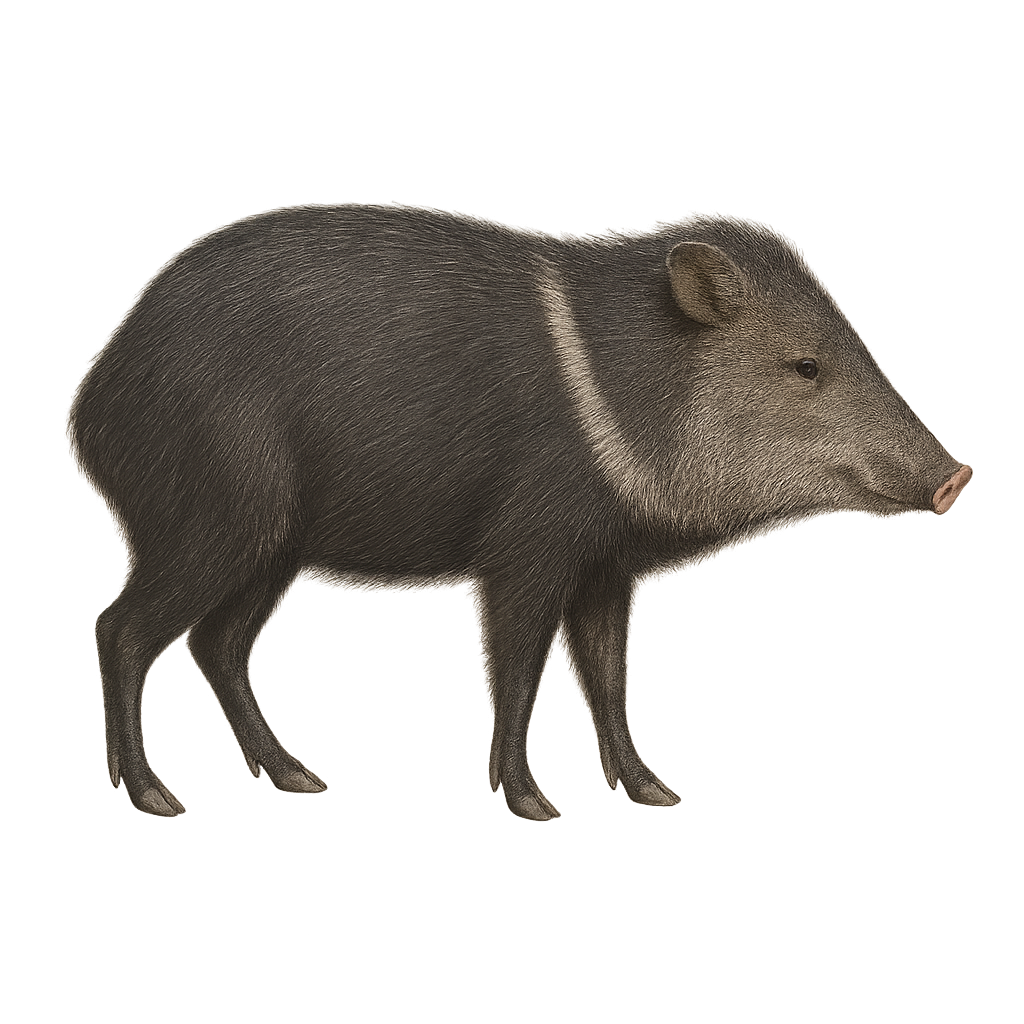Your wildlife photography guide.
Explore the collared peccary in detail, study its behavior, prepare your shots.
Where to observe and photograph the collared peccary in the wild
Learn where and when to spot the collared peccary in the wild, how to identify the species based on distinctive features, and what natural environments it inhabits. The WildlifePhotographer app offers tailored photography tips that reflect the collared peccary’s behavior, helping you capture better wildlife images. Explore the full species profile for key information including description, habitat, active periods, and approach techniques.
Collared peccary
Scientific name: Pecari tajacu

IUCN Status: Least Concern
Family: TAYASSUIDAE
Group: Mammals
Sensitivity to human approach: Suspicious
Minimum approach distance: 10 m
Rut period: October to December
Gestation: 141-151 jours
Births: February to April
Habitat:
Tropical forests, savannas, semi-arid areas
Activity period :
Primarily active during the day, with peak activity in the morning and late afternoon.
Identification and description:
The collared peccary, or Pecari tajacu, is a medium-sized mammal resembling a small wild boar, primarily found in the wooded and semi-arid regions of South and Central America. It is characterized by a band of light-colored fur around its neck, giving it its name. This peccary lives in social groups of up to 20 individuals. It is omnivorous, feeding on fruits, roots, insects, and small vertebrates. Although often hunted for its meat and hide, it plays an important ecological role by dispersing seeds and regulating insect populations. Its ability to adapt to various habitats makes it a resilient species, though it is sometimes threatened by deforestation.
Recommended lens:
300 mm – adjust based on distance, desired framing (portrait or habitat), and approach conditions.
Photography tips:
To photograph the collared peccary, it is advisable to use a telephoto lens of at least 300 mm to capture detailed images without disturbing the animal. Peccaries are often active during the day, which provides good natural lighting conditions. Look for them in wooded or semi-arid areas where they move in groups. Be patient and discreet, as these animals can be suspicious. A tripod can be useful to stabilize your camera, especially if using slower shutter speeds.
The WildlifePhotographer App is coming soon!
Be the first to explore the best nature spots, track rutting seasons, log your observations, and observe more wildlife.
Already 1 431 wildlife lovers subscribed worldwide

